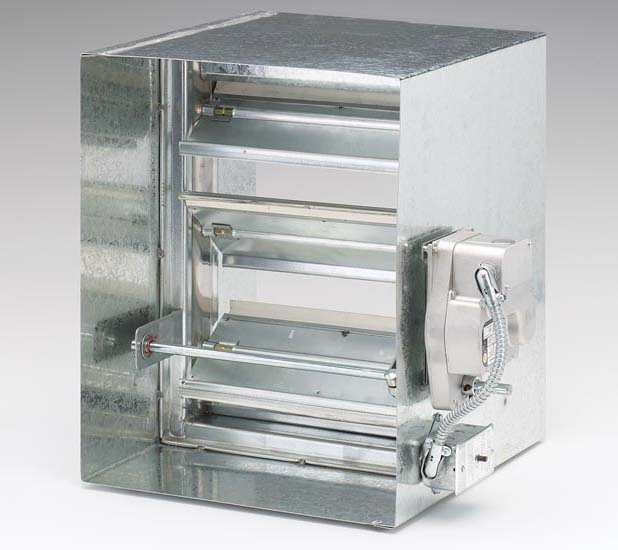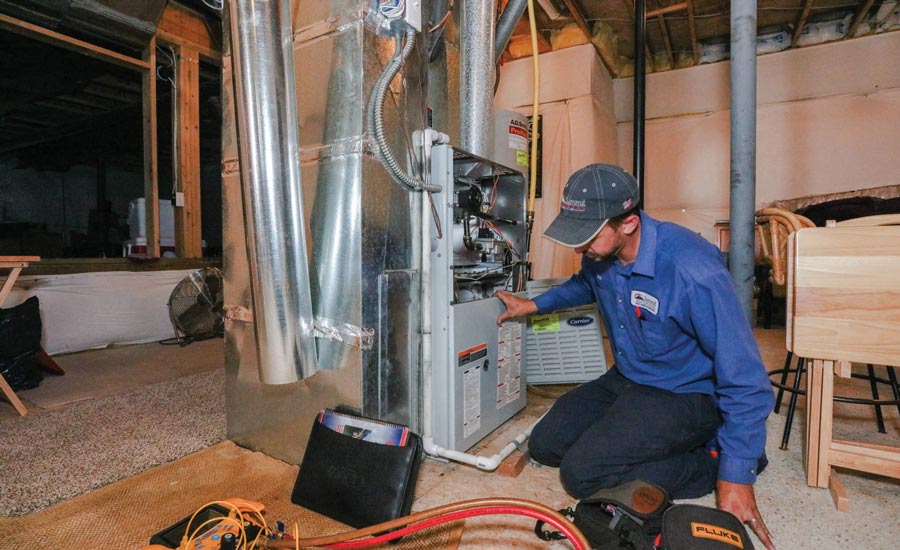Customers have complaints, and they look to contractors to solve them. From a house full of rattling vents to an undetermined smell wending through the ductwork, residential air movement and ventilation can be a challenge that requires multiple callbacks. There is a way to fix it, though, and contractors can arm themselves with knowledge and tools to control the air in the home and improve customer comfort.
According to Rob Falke, president of the National Comfort Institute (NCI), some of the more common complaints seen include drafts or no ventilation, varying room temperatures, inadequate heating and cooling, high utility bills, and noise at grilles and registers.
“Undersized ductwork and inadequate fan capacity can cause these issues,” he explained. “Closed dampers and poorly designed, installed, or damaged duct can also provide clues as to what causes these home discomforts.”
Jacki Donner, CEO of the Home Ventilating Institute (HVI), noted that uneven temperatures and noise in the home are common complaints, and added humidity levels to the list of home discomfort culprits.
“Customers often do not realize the importance of ventilation, its positive effect on IAQ, and the importance of IAQ for the health and productivity of the occupants,” he said. “Consequently, customer complaints regarding their HVAC systems are commonly unrelated to air movement/ventilation and instead tend to focus on uneven temperatures in the home, humidity levels, and noise.”
President National Comfort Institute
Create Balance in Air Movement
When addressing air movement and ventilation in a home, contractors should keep in mind that it is a delicate balance — one that is determined by multiple factors, beginning with proper design and installation.

DUCT SAFETY: The FSD36SS Combination Fire/Smoke Damper is both UL555 and UL555S classified. It is rated as a 1.5-hour fire damper and a Leakage Class II Smoke Damper.
“Balanced ventilation systems, if properly designed and installed, introduce and exhaust approximately equal quantities of fresh outside air and polluted inside air,” said Donner. “A balanced ventilation system usually has two fans and two duct systems. Fresh air supply and exhaust vents can be installed in every room, but a typical balanced ventilation system supplies fresh air to bedrooms and living rooms where occupants spend a majority of their time.”
He further explained that balanced ventilation will also exhaust air from rooms where moisture and pollutants are most often generated, such as the kitchen, bathrooms, and the laundry room.
Balance in the home does not come strictly with proper installation. It must be created and maintained by estimating room airflow, balancing the system, and keeping tabs on the overall balance of the system on a regular basis, according to Falke.
“Once balance is created, it must be maintained by checking static pressure and recording it on the equipment at every service call,” he said. “Ask if the owners have messed with the system — like adding high-efficiency filters, playing with the dampers, adding new types of room occupancy, or are dealing with special health needs, etc.”
Falke encourages contractors to learn to measure and interpret static pressure at four points at every system.
“This is called a pressure profile,” he said. “Changes in pressures are interpreted to pinpoint the slightest changes in a system. Without these measurements, technicians are just guessing.”
In creating and maintaining balance, Donner explained that it is imperative to follow the manufacturer’s maintenance guidelines on all the equipment installed.
“Replace the filters regularly, and don’t forget the filters on the range hood,” he said. “Keep the registers and grilles clean, and take the time to educate the occupants on proper use. The equipment can’t do its job if it’s improperly installed, maintained, or operated.”
The Building Envelope Equation
When addressing the building envelope, Falke remembered what an old building science friend of his always said: “Fix the building envelope and you don’t have to worry about the HVAC system.” To which Falke would reply, “Get the HVAC system right and the envelope is of little concern.”

CUSTOMER COMFORT: Residential air movement and ventilation can be a challenge that requires multiple callbacks. There is a way to fix it, though, and contractors can arm themselves with knowledge and tools to control the air in the home and improve customer comfort.
Building envelopes play a part in air movement, ventilation, and balanced homes. The energy savings that come from tightening the envelope can cause unintended consequences, however — one of which is the accumulation of internally generated contaminants that can cause deficient IAQ, according to Donner.
“Deficient IAQ is a serious problem since it negatively impacts indoor occupants’ health, cognitive function, productivity, and wellbeing,” he said. “Therefore, the tighter the home, the greater the need for mechanical ventilation.”
Donner wanted to point out to contractors that although air movement and ventilation in the home is important, doing so without improved IAQ is short sighted.
“Moving air around the house simply moves contaminants from one place to another,” he said. “The key to ensuring healthy IAQ is the regular use of a properly installed mechanical ventilation system, which is designed to exhaust the stale indoor air and control the fresh outdoor air coming in.”



Report Abusive Comment